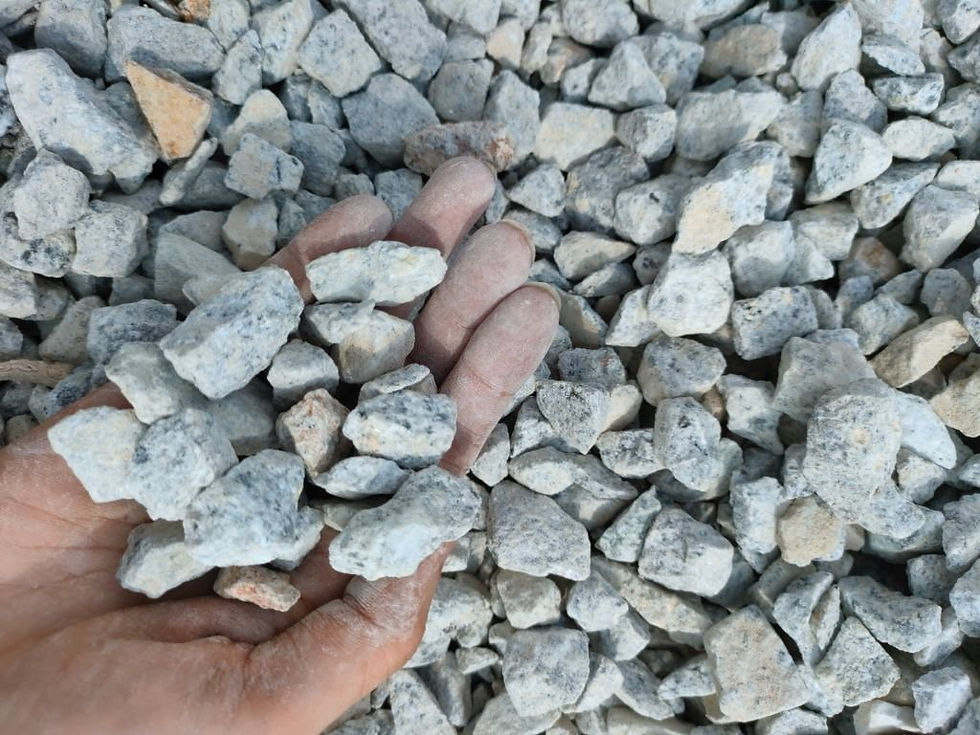Features and Uses of Exposed Aggregate Concrete
- zoehsewell
- Oct 10, 2017
- 3 min read
Updated: Sep 15, 2023
Exposed aggregate concrete is created when the top layer of the cement paste of the concrete is removed resulting in the appearance of the underlying aggregate. Thus, exposed aggregate concrete is nothing but concrete devoid of the topmost layer. This kind of concrete has various advantages over conventional concrete and has many applications.

How is it Created?
The exposed aggregate concrete is made by pouring fresh concrete over the surface followed by the application of a chemical on the surface. This chemical prevents the cement paste on the surface from drying and keeps it soft while the underlying concrete hardens and sets. This is an essential step in manufacturing exposed aggregate concrete.
After the underlying concrete has hardened, the surface paste is removed with the help of brush or pressure washer to expose the gravel in the underlying concrete. The surface is then treated with an acid solution of mild strength. This is done to eliminate any residual cement left on the surface. After drying, the concrete is sealed using a high gloss sealer. The aggregates used in the concrete can be pea-sized or full-sized gravel and even the special aggregates are incorporated into the surface before the concrete sets completely.
How are The Aggregates Incorporated into The Concrete?
One method is to seed the decorative aggregates over the surface of the concrete slab by using darby or bull floats. This is done until the aggregates are covered by a thin layer of cement paste. Another method involves adding the aggregates into the concrete mix during the process of batching. This method requires a number of aggregates.
Yet another method is the placement of a thin topping of concrete on the slab of normal concrete. This topping contains the decorative aggregates. The thickness of the topping can range between 1 and 2 inches.
Kinds of Aggregates Available in The Market
The widely used type decorative aggregates used in exposed aggregate concrete are natural stones made of granite, basalt, limestone, and quartz. These stones are available in a plethora of colors such as pink, dark blue, black, sandy brown, gray and various other hues. The colors of the stones depend upon their geological origin. Seashells and various other natural objects are also often used as aggregates.
Advantages
The most important advantageous feature of the exposed aggregate concrete is its decorative appearance. In fact, it is also called decorative concrete. Exposed aggregate concrete comes in a multitude of colors and textures in various sizes. The type of decorative stone used in the exposed aggregate concrete determines its color palette.
The coarse surface of exposed aggregate concrete prevents slipping during rains and other conditions when the surface becomes wet. It also prevents skidding of tires.
Exposed aggregate concrete is highly durable for decades. It is highly resistant against extreme weather conditions such as heavy rainfall.
It blends well with any other kind of decorative concrete.
Requires less maintenance. It needs to be cleaned occasionally with water and must be resealed after every few years.
Uses
These are some of the uses of exposed aggregate concrete.
The patio is an outdoor living area for families. Different varieties of exposed aggregate concrete are used in patios to impart decorative looks to them. Marble chips and colored stones are often used as aggregates.
Exposed aggregate concrete is widely used for constructing driveways. This is because such a type of concrete is skid proof and is known for high resilience. It is also highly resistant to wear and tear.
Exposed aggregate concrete is also used in walkways.







Comments